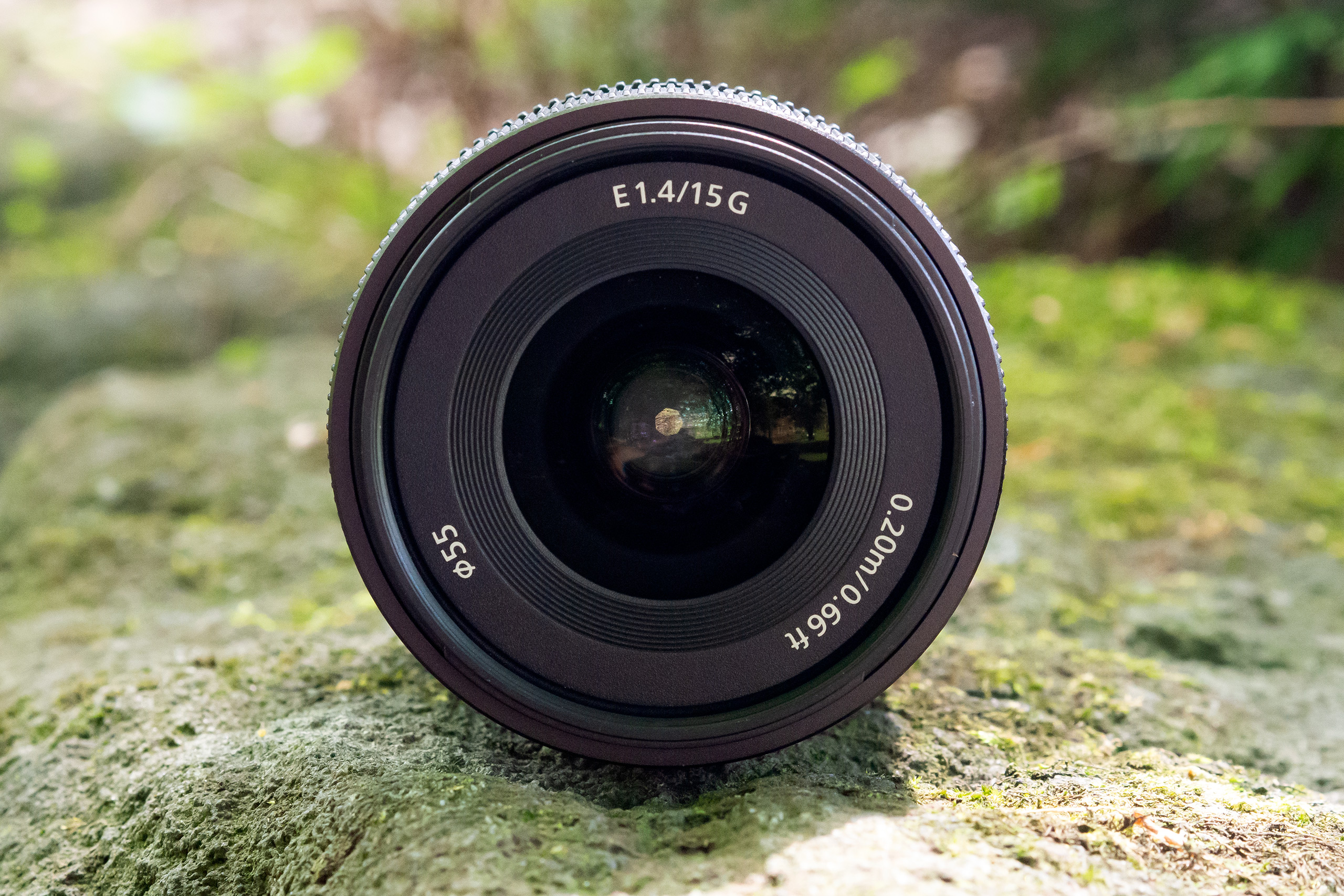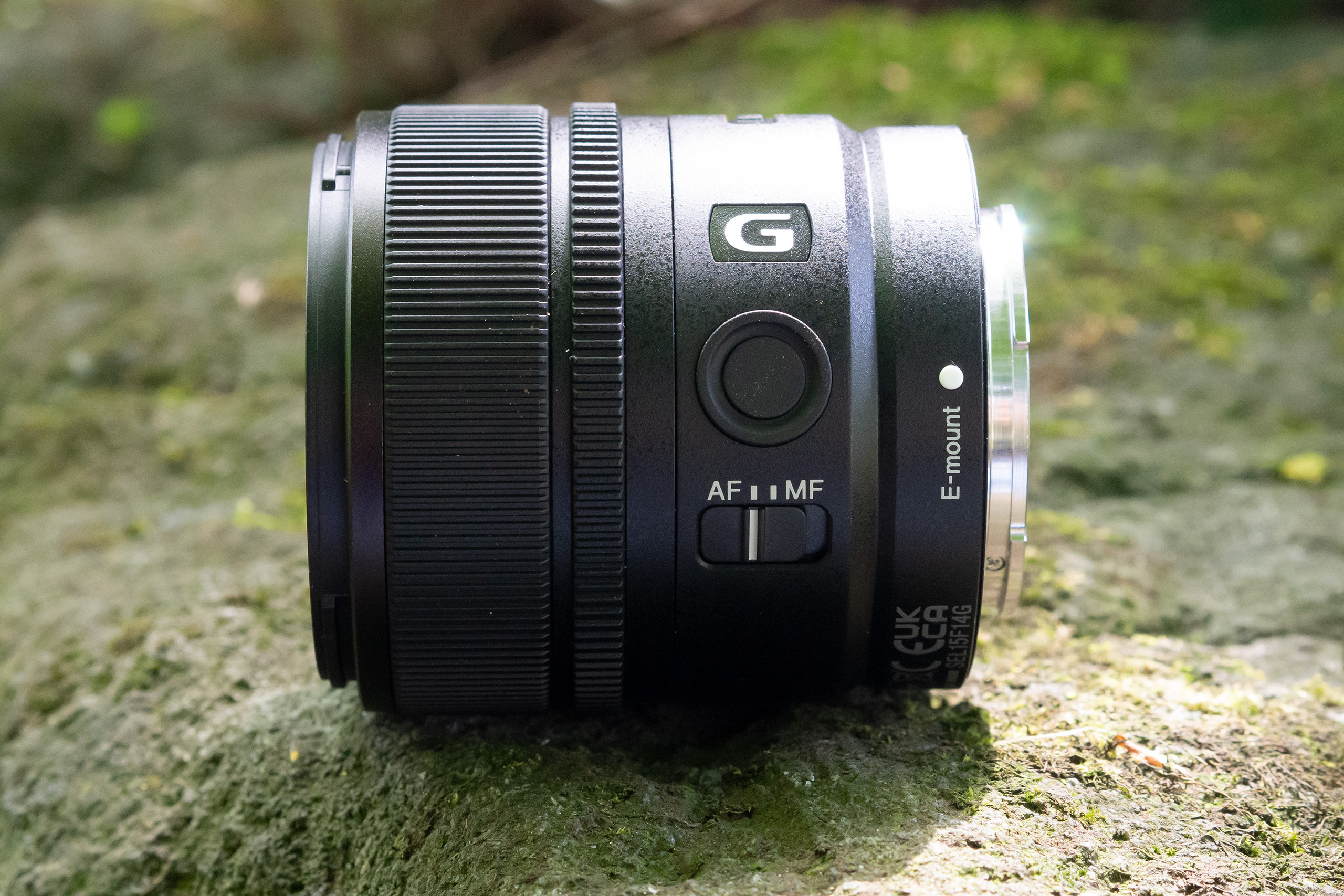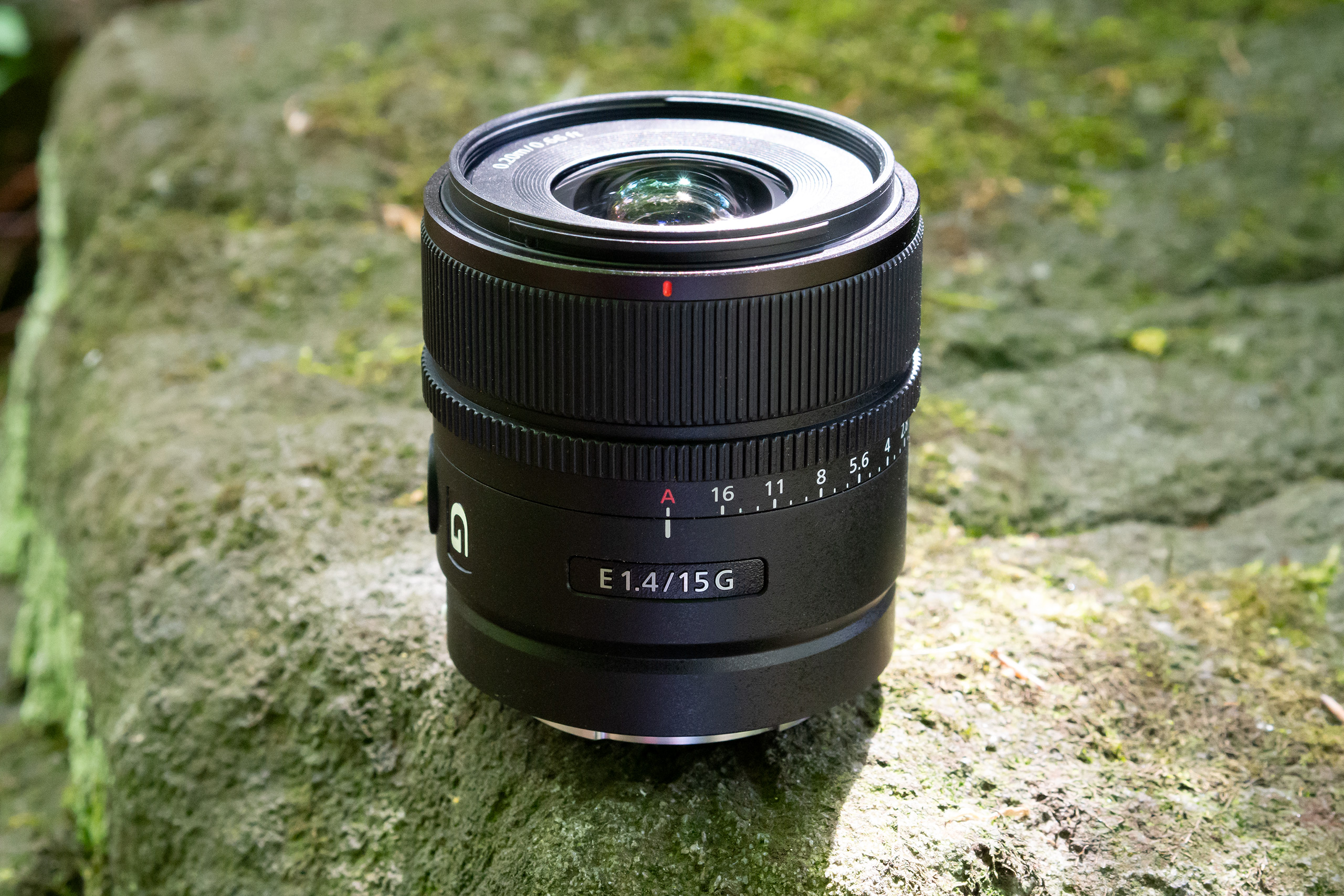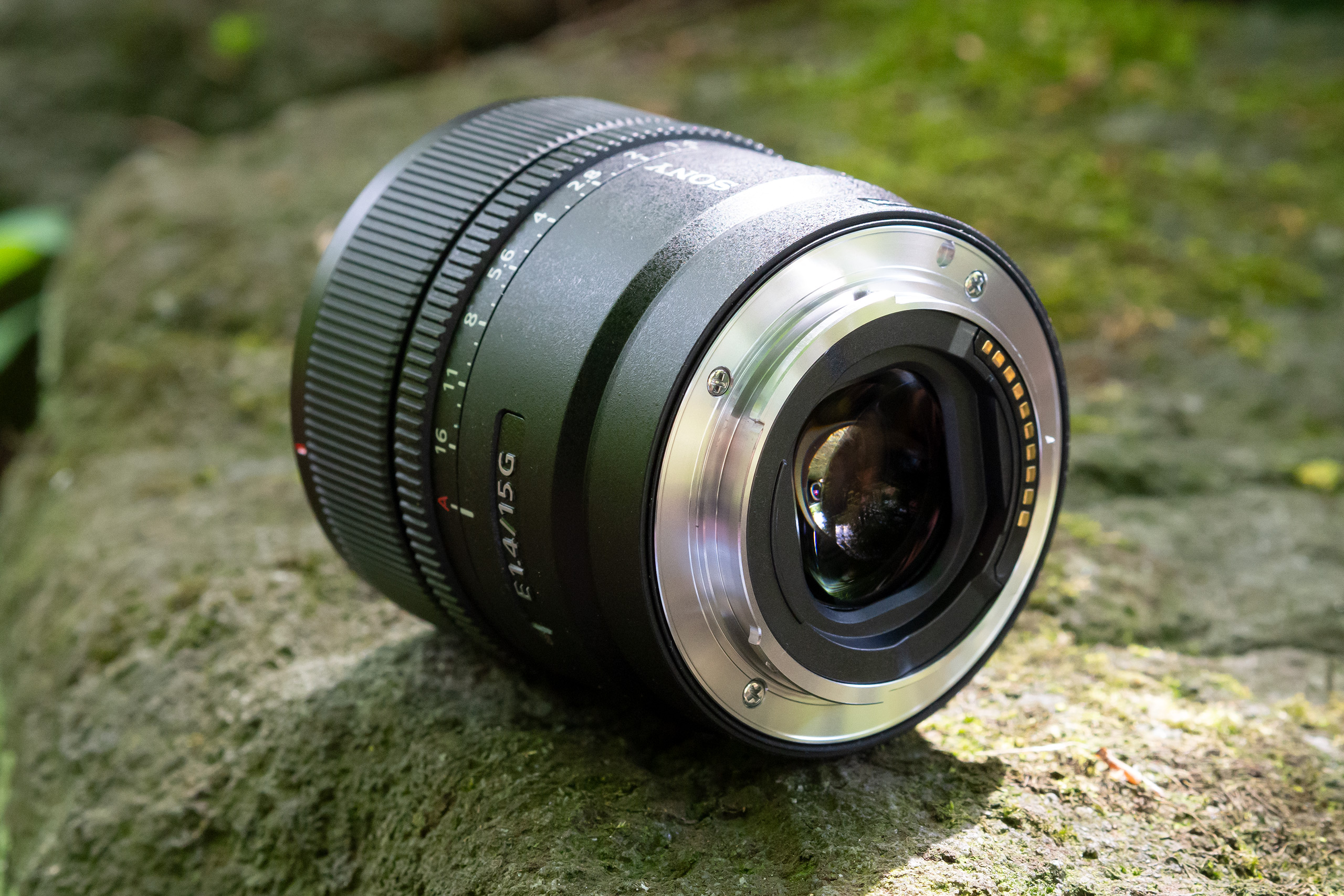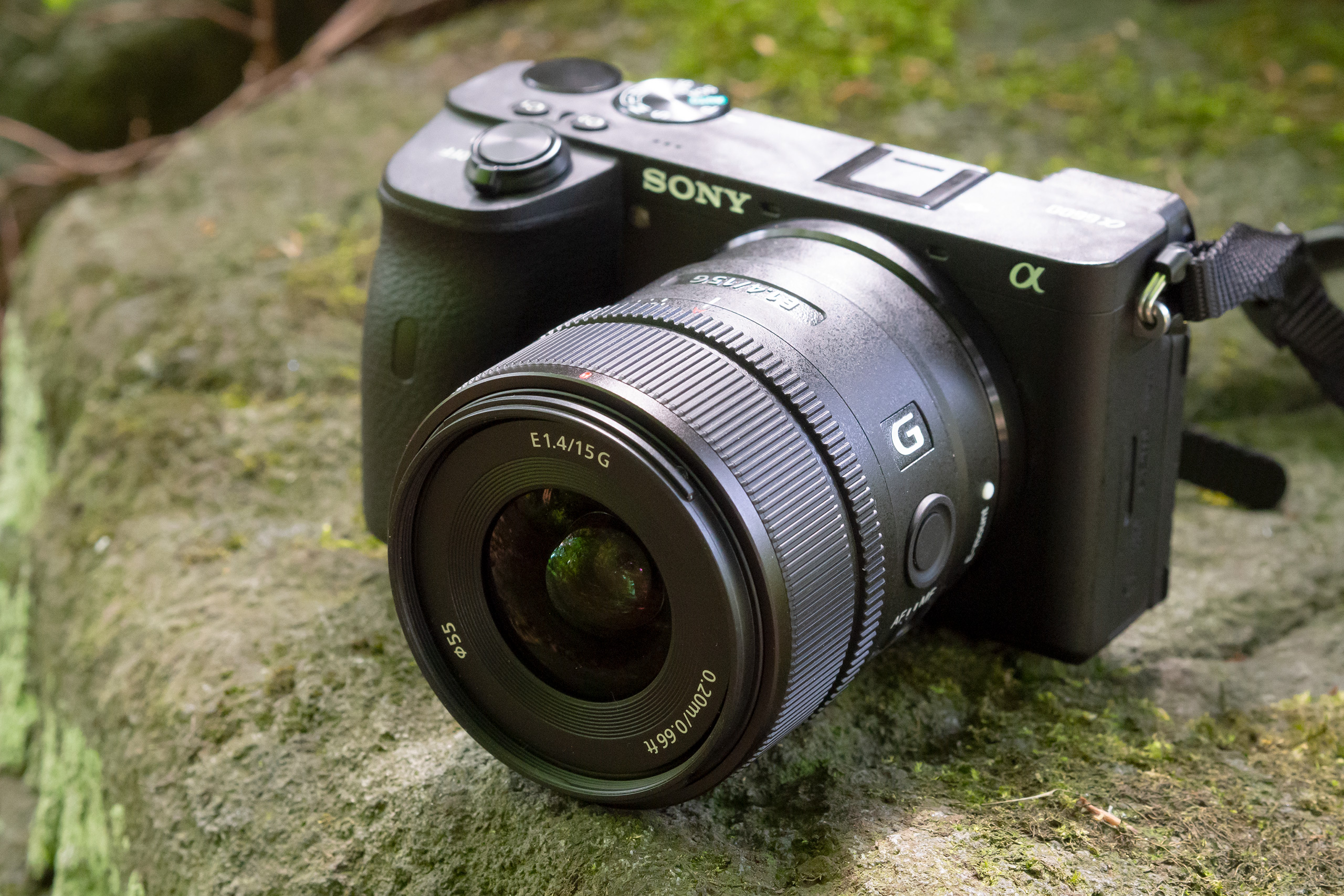As part of a refreshed interest in APS-C lenses, the Sony 15mm F1.4 G lens ($920 / £749) is introduced with two other wide-angle lenses for Sony’s APS-C E-mount mirrorless cameras, including an even wider 11mm F1.8 lens ($613 / £499), equivalent to 16.5mm (in 35mm equivalent terms), and an ultra-wide-angle power zoom lens, the PZ 10-20mm F4 G ($920 / £749), equivalent to 15-30mm (in 35mm terms).
These lenses have been introduced to offer wide-angle lenses that work well for both stills and video recording, with particular attention towards things like focus breathing, and focus performance including speed, accuracy and smoothness.
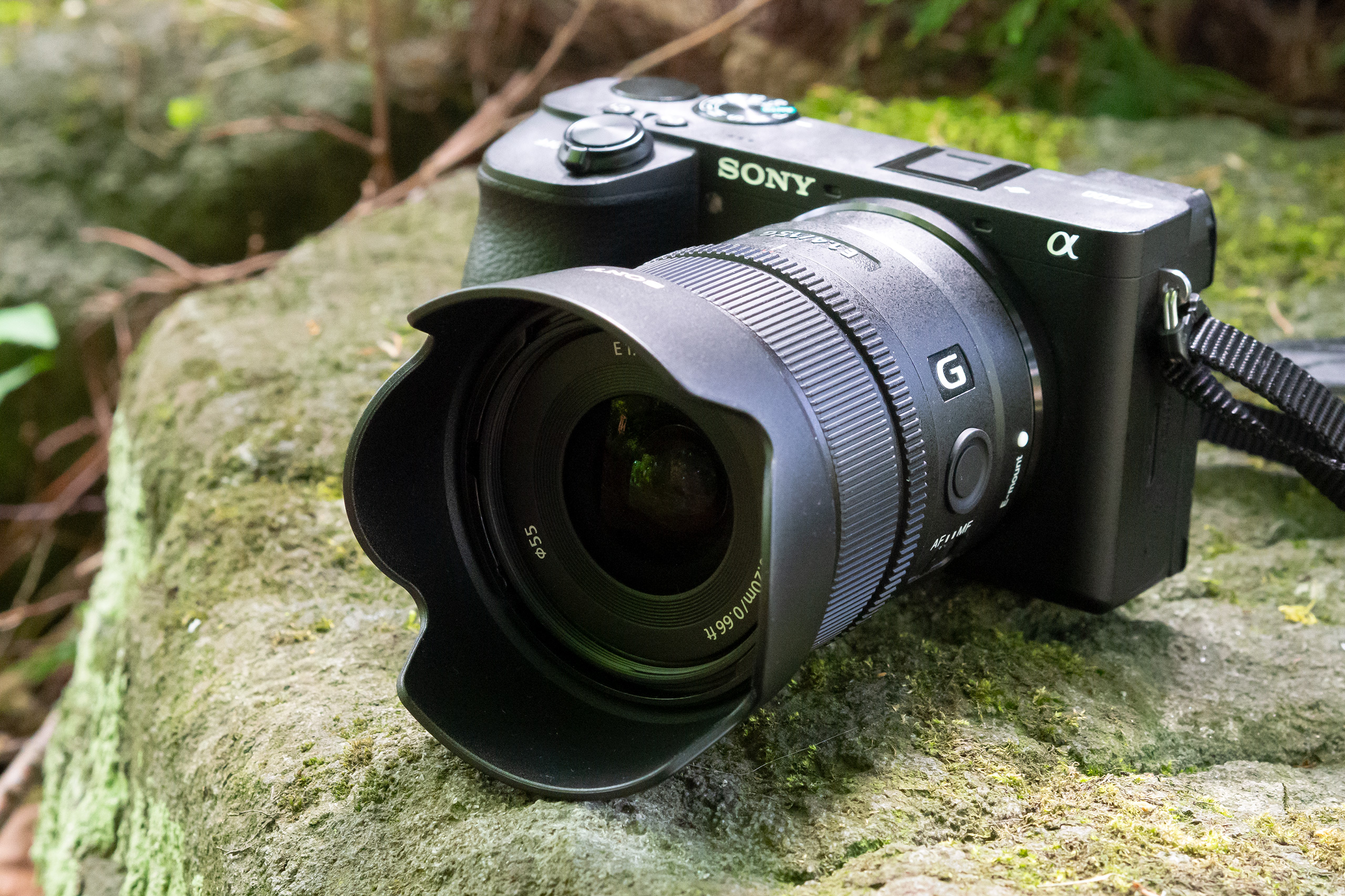
Sony E 15mm F1.4 G with hood on the Sony Alpha A6600
The Sony 15mm F1.4 G is part of Sony’s “G” series, which means it’s a premium lens, designed for high image quality, whilst still being relatively affordable in comparison to Sony’s top of the range lenses, the G Master series (see our guide to the best Sony lenses here)
With a bright maximum aperture of F1.4, this lens lends itself to use in low-light situations, whether that’s for video or low-light night photography or astrophotography, as well as the more obvious uses such as landscape, interior and real estate.
Sony E 15mm F1.4 G Features
The optical construction of the lens is made up of 13 elements in 12 groups, with 1x ED (extra-low dispersion) element, 1x Super ED glass, and 3x Aspherical elements.
The lens is designed to be used with distortion correction switched on in-camera, and to this affect, it’s not possible to switch the camera to “Off” with the camera fixed to Auto (On). This ensures that all JPEG images are automatically corrected, whilst raw files will need software that recognises the lens’ EXIF data and can therefore apply a profile. It also allows for a more compact and lightweight lens in comparison to a lens developed without digital correction.
The aperture features 7 blades which are designed to give a circular aperture to enhance the appearance of bokeh, aka background blur. This is a large aperture lens, with F1.4 being the widest aperture available, and this can be stopped down to F16.
Aperture click on/off switch
The aperture ring can be adjusted using the side click on/off switch, giving silent aperture control (for video etc), there’s also a focus hold button on the side, and an AF/MF switch. The focus hold button can be customised to your own preferences.
Two linear motors offer smooth and silent AF, and this is an internal focusing system, designed to give minimal breathing, with both video and stills use in mind. If using manual focus, the lens has a linear response, designed to give you precise manual focus.
Close focus is part of the design, letting you get as close as 17cm (0.15x magnification) using manual focus, or 20cm (0.12x magnification) using auto-focus.
The lens has been made with a compact and lightweight design with a 66.6mm diameter, and it’s 69.5mm tall, weighing just 219g. To achieve this light weight, the lens is made of aluminium and “engineering” plastic, and as you’d expect on a premium lens there is a metal lens mount.
This makes it considerably smaller and lighter than other bright prime lenses, such as the Sigma 16mm F1.4 (priced at $441 / £359).
The lens features weather-sealing for all buttons and rings, giving dust and moisture resistance, although for full weather-sealing, it will need to be matched with a weather-sealed camera.
There’s a focus ring at the front, which is a good size, and behind this, the aperture ring, with A (Auto/camera controlled), and F16-F1.4 selectable, with two stops between each marked setting. You’ll find a 55mm filter thread at the front, and the lens features multi-coatings.
Sony E 15mm F1.4 G Build and Handling
The lens feels very well-made, and lighter than expected, which will either please those looking for something lightweight, or disappoint those who associate weight with build quality. The main contact point of the lens, where you hold the lens is made from plastic, which gives a reasonable feel, but again, for those that associate metal and weight to build quality, this could disappoint. However, it’s a simple fact that in order to produce a lightweight lens, plastic construction is needed, and it’s likely that a metal construction would have resulted in a lens that is twice the weight.
The metal rear mount gives the solid impression you’d expect from a lens at this price point, fitting snuggly to the camera, and the rubber seal gives weather-sealing when used with Sony’s weather-sealed cameras such as the Sony Alpha A6600.
The switches on the lens, which includes an AF/MF switch on the left, next to the focus hold button, and a Click On/Off switch, feel very well made, and have a reassuring clunk when used. The aperture ring has a firm level of resistance between the A setting and the aperture settings, giving you reassurance that you won’t accidentally switch the setting. Once you’re in the aperture range (F16 to F1.4), there’s just the right amount of resistance to the ring, with two stops in-between each setting, and for video use being able to turn the click off will be of particular interest.
In the box you’ll find a flower shaped lens hood, as well as front and rear lens caps. The hood gives extra protection against flare, and can be reversed for storage, although this does block the focus ring.
Autofocus
Using this lens with the Sony Alpha A6600, focus was extremely rapid, and even when trying to capture something quickly, the camera locked onto the subject very rapidly with excellent results, and I managed to capture a number of shots of sheep before they moved away, and they were perfectly focused.
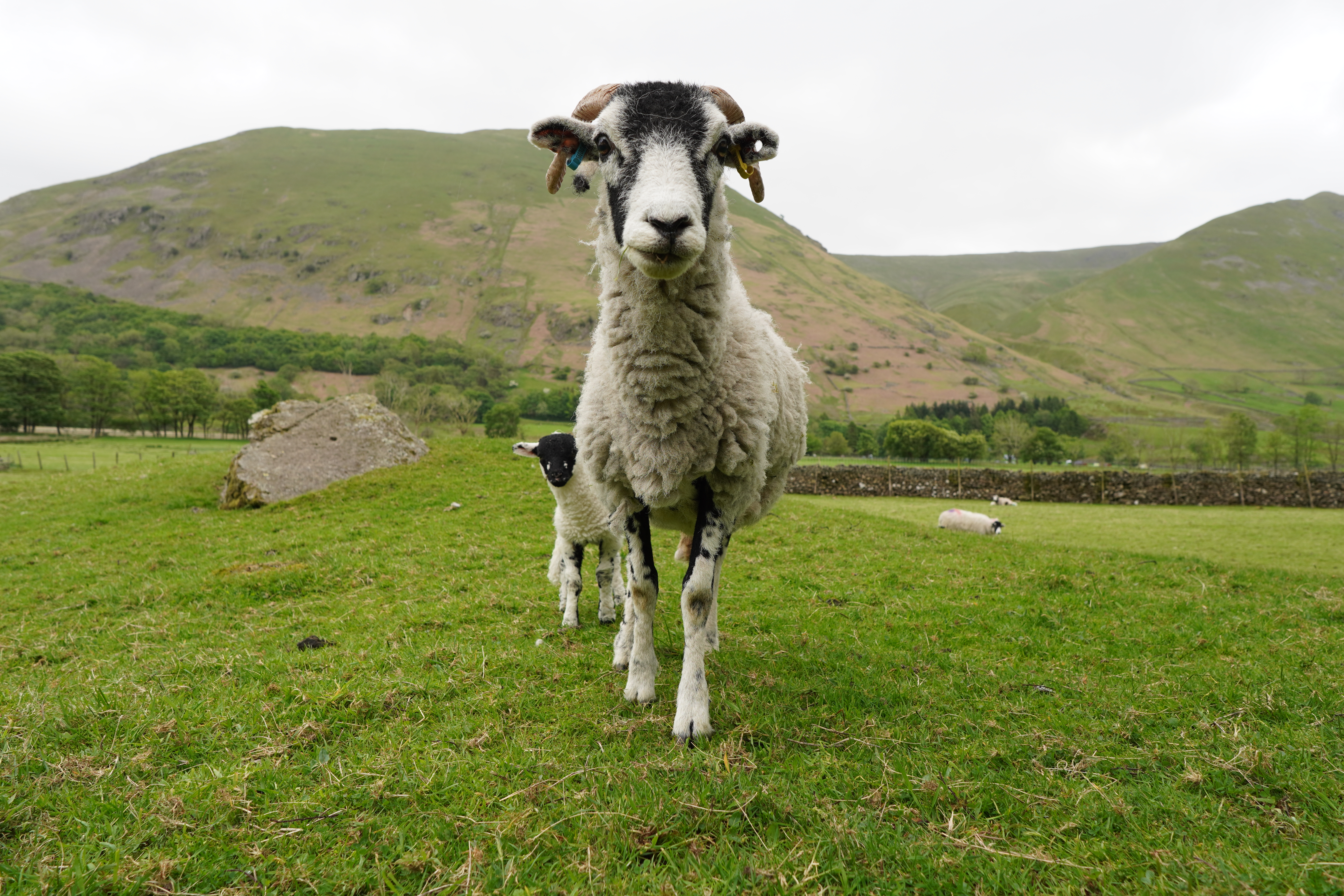
A lucky encounter with a sheep and lamb, Sony E 15mm F1.4 G, 1/160s, f/4.5, ISO100, JPEG straight from camera, click to enlarge
When focusing on close subjects, the autofocus system occasionally struggled, however, this was due to me trying to get as close as possible to the subject, and this meant it was outside the lens’ focus range. To get correct focus, I would have needed to switch to manual focus, or simply move back slightly.

Travel landscape shot, on the road, 1/400s, f/7.1, ISO100, JPEG straight from camera, click to enlarge
As expected from the design of the lens, there appears to be very little focus breathing, when moving focus from close to distant subjects.
Sony E 15mm F1.4 G Image Quality
Detail captured by the camera and lens combination is very good, with particularly impressive levels of detail in the centre of the frame, with very sharp detail here. It’s likely that we won’t see the true potential of this lens, until Sony releases an APS-C camera with a higher resolution sensor than the 24MP on offer on the A6600, and ZV-E10 etc.

We processed this raw image to bring out the colour and detail, as well as dynamic range, Sony E 15mm F1.4 G, 1/320s, f/6.3, ISO100, click to enlarge
Shooting wide-open at F1.4 outdoors in bright light can be an issue, particularly if you’re using a camera such as the A6600, which has a fastest shutter speed of 1/4000s, therefore you may be forced to stop down to get a correctly exposed photo, or use an ND filter if shooting wide-open in all situations is your primary aim.
When taking photos at F1.4 it’s possible to see that the image is sharp, but isn’t quite as sharp as when stopped down, with detail becoming sharper at F2, and particularly sharp and crisp at F2.8 and on from here. It really is impressive how sharp this lens is. At F11 and F16 the effects of diffraction soften the image slightly.
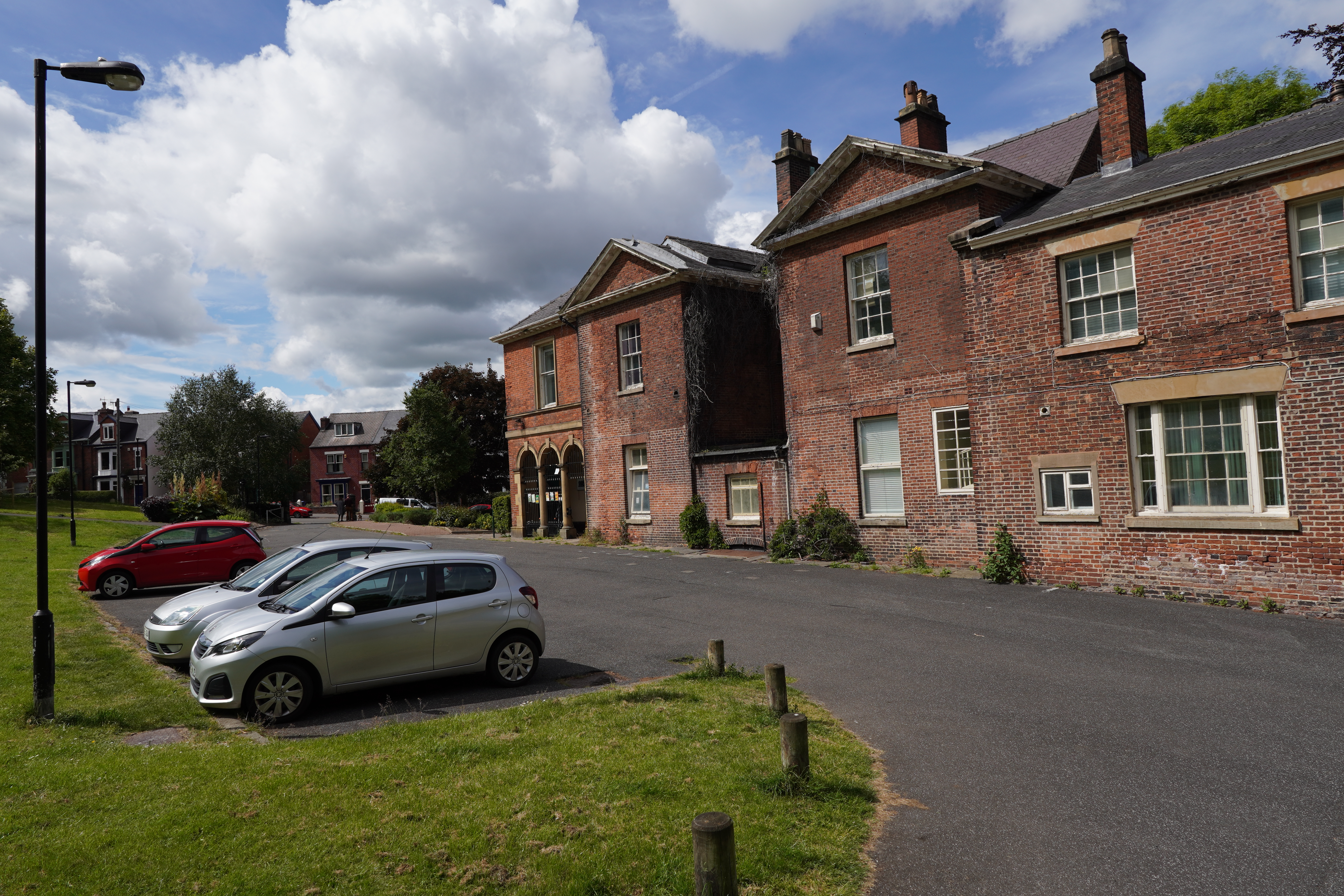
Detailed architecture (Meersbrook Hall), Sony E 15mm F1.4 G, 1/500s, f/8, ISO100, JPEG straight from camera, click to enlarge
Chromatic aberration
Detail in the corners is quite impressive even when shooting at F1.4, although there does appear to be slightly elevated levels of chromatic aberration towards the corners. You really do have to be “pixel peeping” to see this though, as for the most part chromatic aberration is extremely well controlled, with corrections switched on.
With a close focus distance you can get pleasing background blur, but as this is a wide-angle lens, this isn’t likely to be the most common use for this lens.
Using Sony’s in-camera optical correction, distortion compensation is fixed and on at all times (AUTO), but you can switch shading compensation (vignetting) On (Auto) and Off, as well as chromatic aberration compensation with options of On (Auto), and Off.
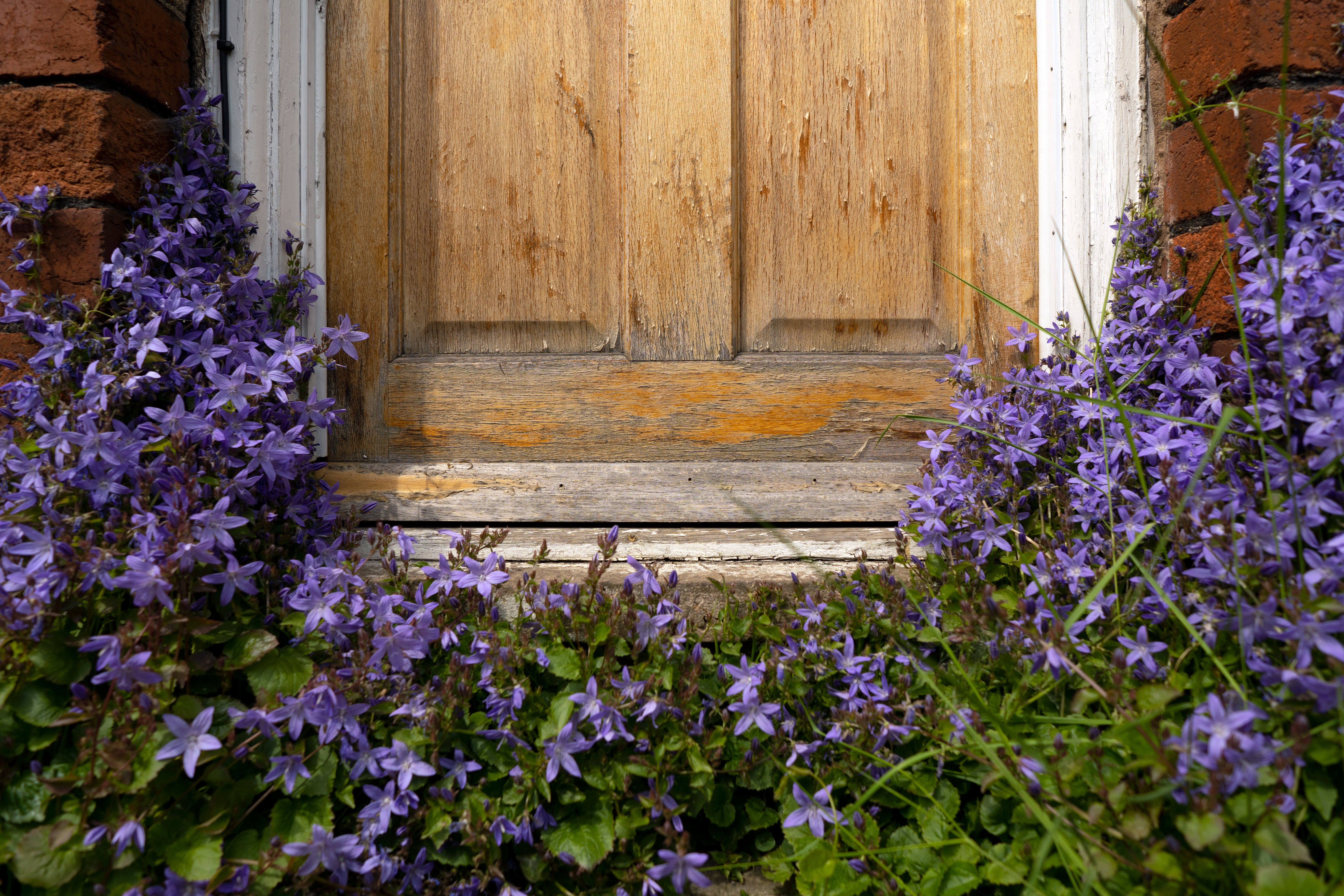
Sony E 15mm F1.4 G lens, doorway raw corrected manually in ACR, 1/1600s, f/3.2, ISO100, click to enlarge
Strong barrel distortion is visible if you open the raw files in software that doesn’t yet have a profile for correction, and when using Adobe Camera Raw, it’s quick and easy to manually correct the image when needed.
Vignetting & Flare
Vignetting is sometimes noticeable when shooting at F1.4 (wide-open), but quickly goes as you stop down to F2 and onwards. This is with vignetting correction switched on, and can easily be corrected if needed in Photoshop or similar editing software.

Close focus, shot wide-open at F1.4, Sony E 15mm F1.4 G, 1/1600s, f/1.4, ISO100, JPEG straight from camera, lens corrections enabled, click to enlarge
The lens is very resistant to flare, and we had to take multiple shots with the sun in the frame before we found the “sweet spot” (so to speak) to show lens flare in the image. Even with flare in the image, it’s relatively small, and the rest of the image maintains high levels of contrast and colour saturation.
Sony E 15mm F1.4 G Verdict
The Sony E 15mm F1.4 G lens is a compact, lightweight lens, with good levels of control, thanks to a good size focus ring, a neatly placed aperture ring, as well as a number of switches on the side. This includes the all important clickless option, which will be essential for silent operation during video work. Stills photographers are not forgotten, with an AF/MF switch, and customisable focus hold button.
One thing that make the lens less appealing is the price, $920 / £749, it’s considerably more expensive than the nearest competitor, the Sigma 16mm F1.4 ($441 / £359), which is less than half the price! However, if a slightly wider view, and a more compact and lighter lens is your priority then the price may be something you’re willing to pay.
Luckily for Sony, the image quality produced by the lens is extremely pleasing, with very sharp, detailed images, low levels of distortion (with the camera producing expertly corrected JPEG images), and good levels of detail into the corners, no matter what aperture is used. You can focus on close subjects with ease, and this gives pleasing backgrounds.



